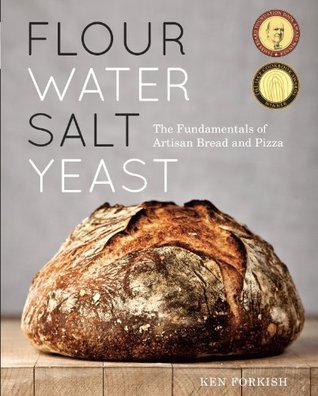What do you think?
Rate this book


446 pages, Kindle Edition
First published January 1, 2012
At Ken's Artisan Bakery, we feed the levain three times a day. There are two reasons why I didn't go that route in this book. First, my bakery is a lot warmer than the typical home kitchen, so the levain matures much more quickly and needs more feedings to keep it from getting sour. [p. 126]
The Saturday White Bread] recipe is designed for someone who wants to make good, crusty loaves of white bread from start to finish in one day. [...] Here you get the taste-good benefits of a medium-length fermentation, resulting in a versatile, delicious bread that’s great as a dinner bread [The Saturday White Bread, p. 81]
~ ~ ~ ~
[Overnight White Bread] dough rises overnight, and the extended bulk fermentation gives it more time to develop complexity in its flavors than the two Saturday Breads (pages 81 and 85). [...] This bread has many uses and won’t last long. [Overnight White Bread, p. 89]
~ ~ ~ ~
I don't call for scoring the loaves with a razor before baking. Because the loaves are baked with the seam side up (the side opposite the smooth top of the shaped loaf in the proofing basket) and after a complete proof,fissures will naturally open on the top of the loaf as it expands in the oven. I love the organic look of the natural splits. [p.76]